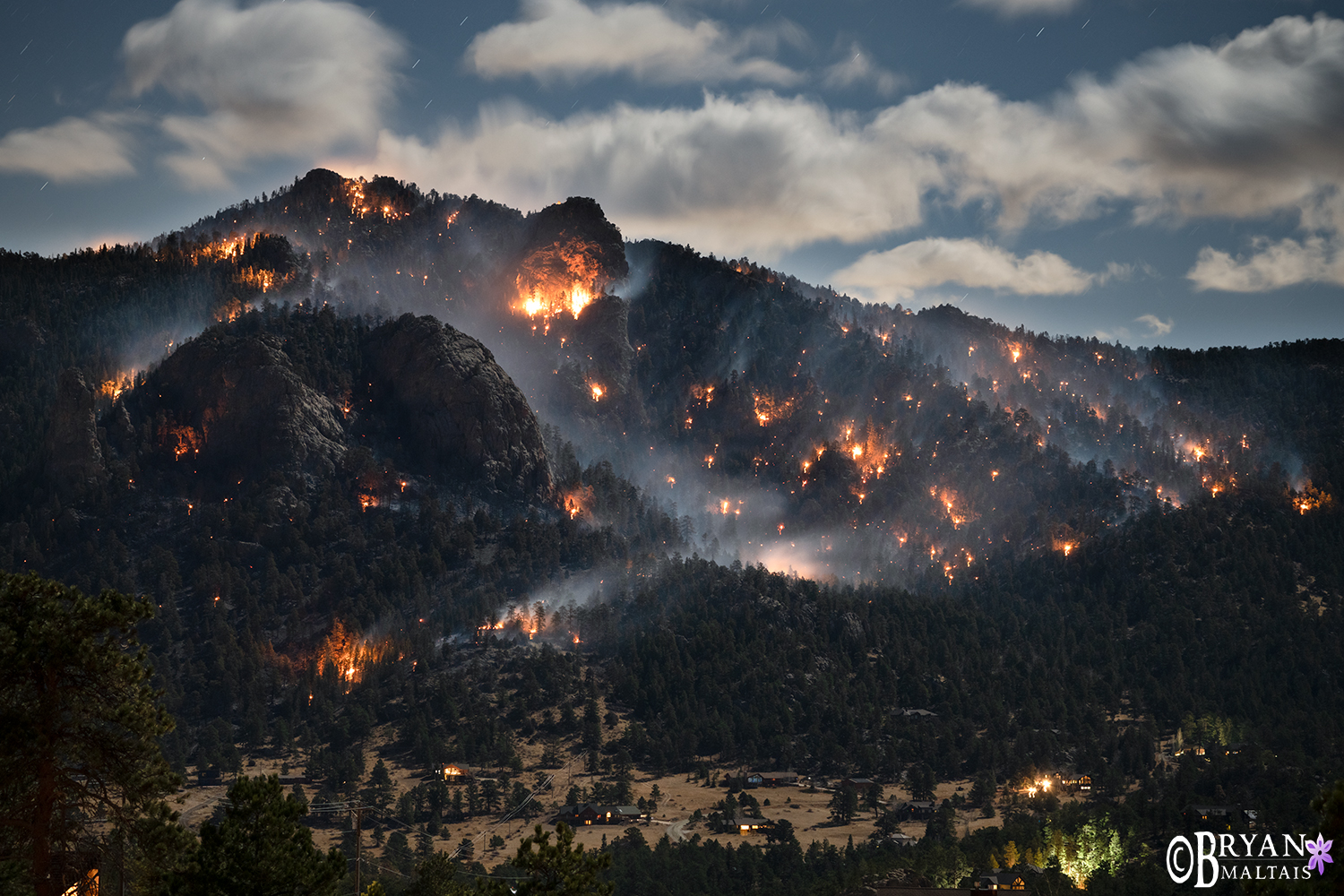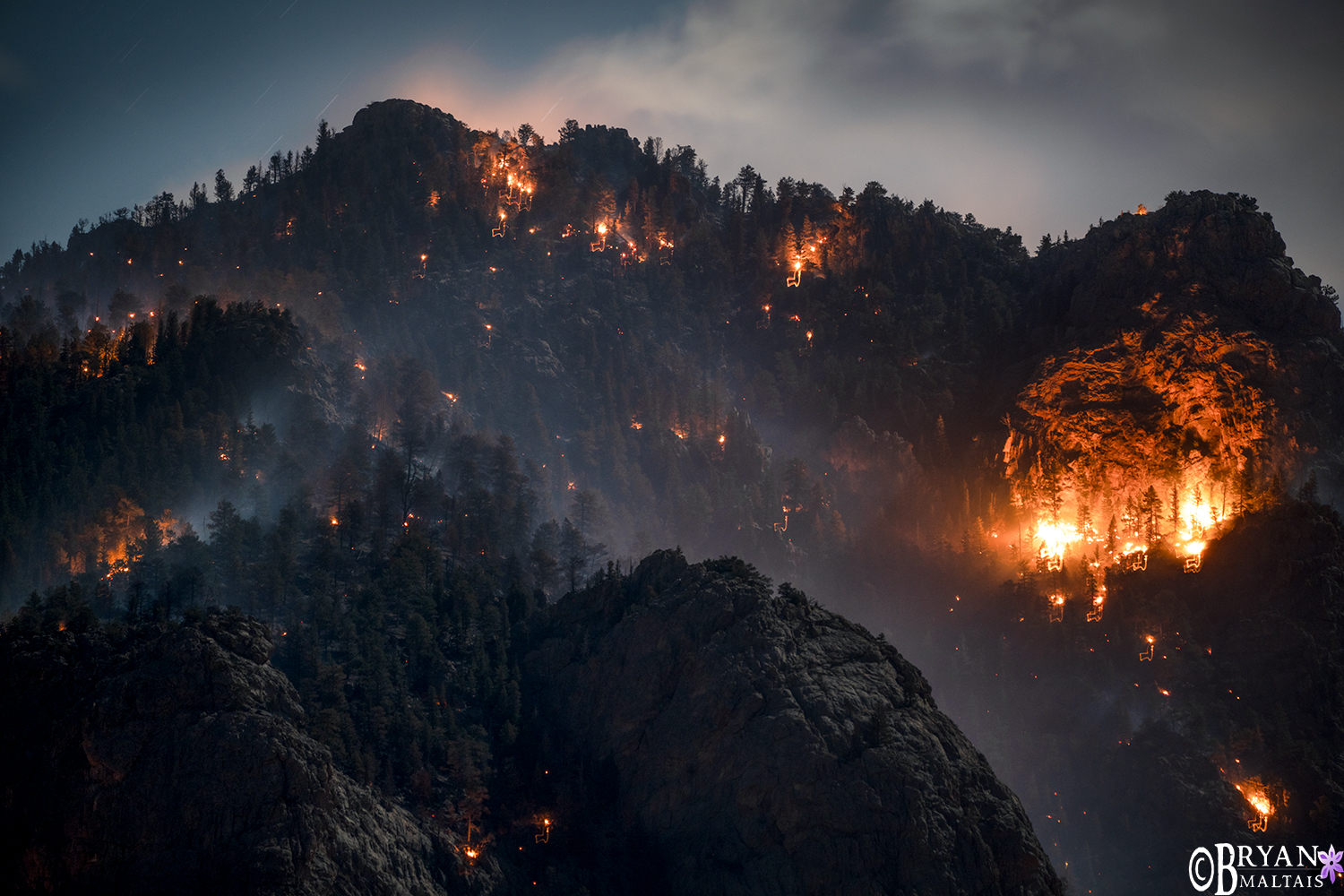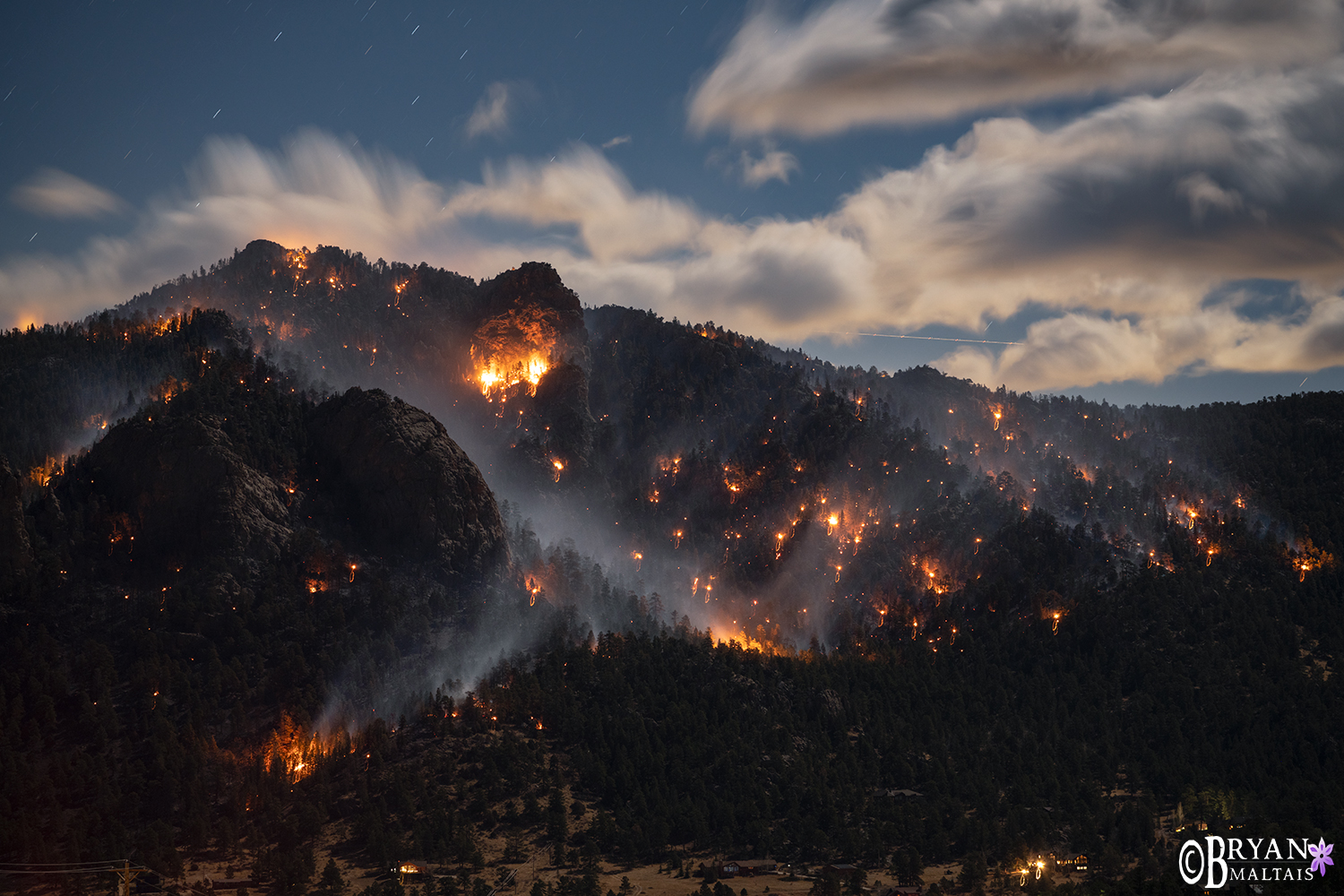
 On Tuesday morning, Nov 16th 2021 in south Fort Collins I could see smoke coming from the Estes Park Area. Being mid November, I thought it was from a controlled burn or a structure, but certainly not a forest fire. I had plans to drive up to Estes Park today anyway, first to photograph Bighorn Sheep in Big Thompson Canyon and then to hike up to Mills Lake in Rocky Mountain National Park to shoot sunset. I was surprised when I arrived in Estes Park to see Kruger Rock Mountain embroiled with smoke. I set off on my hike to Mills Lake at 14:00 and returned to my truck at 18:00 in total darkness after photographing sunset. As I drove out of the National Park, Kruger Rock came into view glowing in the night with its forest engulfed in flames. Because I intended to photograph Bighorn Sheep, I happened to have my telephoto lenses with me, which was necessary to shoot the fire from a distance.
On Tuesday morning, Nov 16th 2021 in south Fort Collins I could see smoke coming from the Estes Park Area. Being mid November, I thought it was from a controlled burn or a structure, but certainly not a forest fire. I had plans to drive up to Estes Park today anyway, first to photograph Bighorn Sheep in Big Thompson Canyon and then to hike up to Mills Lake in Rocky Mountain National Park to shoot sunset. I was surprised when I arrived in Estes Park to see Kruger Rock Mountain embroiled with smoke. I set off on my hike to Mills Lake at 14:00 and returned to my truck at 18:00 in total darkness after photographing sunset. As I drove out of the National Park, Kruger Rock came into view glowing in the night with its forest engulfed in flames. Because I intended to photograph Bighorn Sheep, I happened to have my telephoto lenses with me, which was necessary to shoot the fire from a distance.
At the time of these photos, the Kruger Rock Fire had grown to about 140 acres and was about 15% contained. The forest fire was sparked by electrical lines that blew down in the abnormally strong winds. Autumn along the Colorado Front Range has been dry and unseasonably warm. In most years the region’s first snow usually arrives by late October, but so far there has been no snow.
Tragically, a single-engine water bomber that was attempting to battle the Kruger Rock Fire by night crashed into a mountain. The pilot lost his life. The news of a hero perishing while helping others really stings, especially when coupled with the incomprehensible acreage of forest already burned recently across the American West. Multiple homes at the base of the mountain are threatened as the nearby flames are spread ever closer by strong winds.
I shot these photos of the Kruger Rock Fire with a Sony 100-400mm G-master lens mounted on an A7R IV. The settings were f/5.6 @ ISO800 for 30 seconds. A near full-moon illuminated the foreground, and the long 30-second exposure is responsible for blurring the clouds, smoke, and creating slight star trails.



